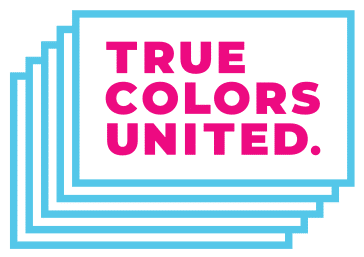“We have the opportunity today, as a nation, to effectively address and ultimately end youth homelessness.”
Yesterday, Justin Rush, the True Colors Fund’s Director of Public Policy, testified in front of the United States House of Representatives’ Committee on Financial Services. The hearing provided the Committee, chaired by Rep. Maxine Waters, insight into the scope of homelessness in America and the work being done to end it. Yesterday’s hearing was the very first hearing of the 116th Congress & the first ever full Committee hearing on homelessness! Six experts shared knowledge about topics ranging from veterans homelessness to affordable housing. This group of witnesses also included Ann Oliva, Senior Policy Advisor to the CEO at the Corporation for Supportive Housing and member of our Board of Directors.
Justin’s testimony focused on youth homelessness, highlighting the unique experiences of LGBTQ young people and youth of color. You can read the full text here. We broke down some of the key points from Justin’s testimony below:
The Facts: What does youth homelessness look like?
“Consideration of the issue of homelessness in the United States could not be more timely, particularly as it pertains to our nation’s most impacted. An estimated 4.2 million youth and young adults up to age 24 experience homelessness each year in the United States.”
Consider this: one in 30 youth ages 13 to 17 and one in 10 young adults ages 18 to 25 endure some form of homelessness in a year. According to a recent study from Chapin Hall at the University of Chicago:
- Black or African-American youth have an 83% higher risk for homelessness.
- LGBT youth have a 120% higher risk for homelessness.
- Latinx youth make up 33% of 18- to 25-year-olds reporting homelessness.
LGBTQ youth and youth of color face unique challenges while experiencing homelessness.
One of the most alarming facts Justin shared is that, “nearly one in four African American young men, ages 18 to 25, identifying as LGBTQ reported homelessness in the last 12 months. Such findings are consistent with the disparities that have been found among in-school suspensions, incarceration, and foster care placement.”
To understand youth homelessness, one must consider the multiple intersecting factors that cause young people to experience homelessness. Youth experiencing homelessness live at the intersections of various marginalized identities – such as race, gender identity and expression, age, sexual orientation, immigration status, ability, and more.
“LGBTQ youth of color are vulnerable to discrimination in education, employment, housing, and more likely to be involved in the criminal justice system. Institutional racism, homophobia, and transphobia contributes to pathways into homelessness for these young people, and it stymies their ability to exit homelessness.”
One in four transgender people report experiencing housing discrimination in America because of their gender identity. This contributes to homelessness or housing instability and often prevents them from accessing services. As a result, transgender youth experience longer bouts of homelessness than their peers. The systems meant to serve youth experiencing homelessness – juvenile justice, homelessness, child welfare, health care, immigration, and education – need to take into account the specific circumstances and unique needs of all young people.
What can America do about youth homelessness?
Is homelessness solvable? Will homelessness ever really end? The answer is yes. Thanks to previous investments by Congress and countless hours of advocacy and service from leaders young and old, we have seen remarkable nationwide progress toward ending homelessness. But our efforts have to be collaborative and targeted.
Congress should renew its commitment to preventing and ending youth homelessness. Here’s how they can do that:
- Require equal access to government-funded services based on sexual orientation and gender identity.
- Provide legal protection for LGBTQ youth and train staff on LGBTQ competency.
- Lower barriers to permanent housing.
- Facilitate rapid entry into housing, increase supportive services, and protect the full legal rights of tenants.
- Elevate the voices, experiences, and expertise of youth who have experienced homelessness.
- Furthermore, include them in all aspects of the planning and implementation process of programs and initiatives designed to prevent and end youth homelessness.
We’ve already seen incredible progress through initiatives like the Youth Homelessness Demonstration Project (YHDP). This federal initiative is helping up to 46 communities identify and implement strategies to end youth homelessness. Since 2016, our advocacy efforts have been crucial to securing $167.5 million in new annual funding for the creation and expansion of the project. True Colors Fund staff, along with our National Youth Forum on Homelessness, has played a vital role in making sure that each community meaningfully incorporates the insights of youth with lived experience of homelessness. In his testimony, Justin called for continued support of YHDP from Congress and endorsed the Ending Homelessness Act of 2019, which would allocate more funding and infrastructure to preventing and ending youth homelessness.
Big things are in the works in the movement to end youth homelessness. Click here to join our email list and stay informed about our work!
